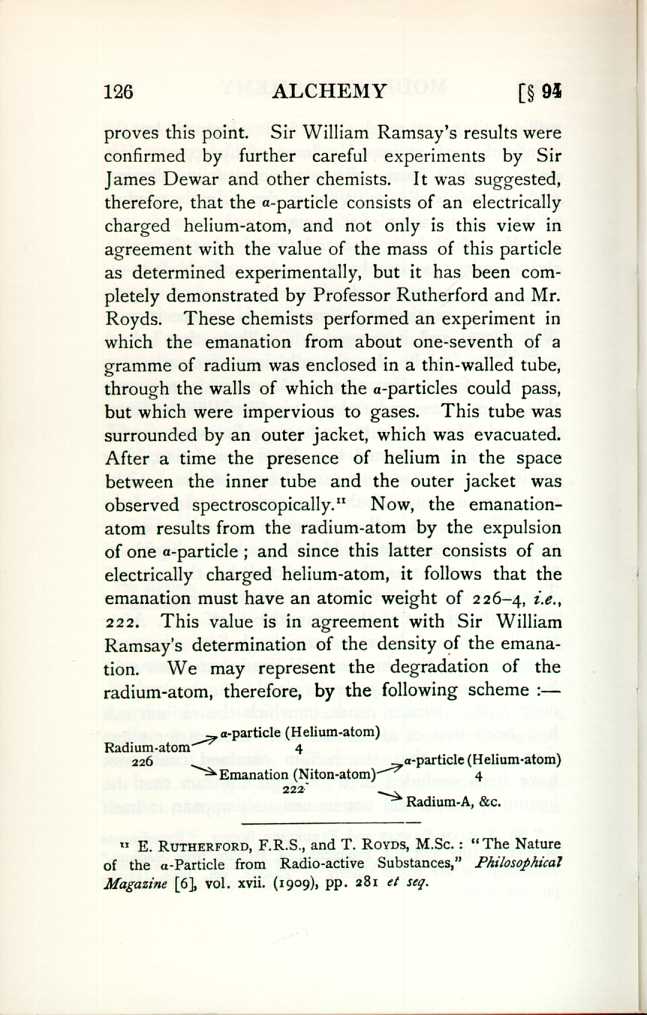§ 94. The Production of Helium from Radium.
It had been observed already that the radioactive minerals on heating
give off Helium—a gaseous element, characterised by a particular yellow
line in its spectrum—and it seemed not unlikely that helium might be
the ultimate decomposition product of the emanation. A research to
settle this point was undertaken by Sir William Ramsay and Mr.
Soddy,10 and a preliminary experiment
having confirmed the above speculation, they carried out further very
careful experiments. "The maximum amount of the emanation obtained from
50 milligrams of radium bromide was conveyed by means of oxygen into a
U-tube cooled in liquid air, and the latter was then extracted by
the pump." The spectrum was observed; it "was apparently a new one,
probably that of the emanation itself.... After standing from July 17 to
21 the helium spectrum appeared, and the characteristic lines were
observed." Sir William Ramsay performed a further experiment with a
similar result, in which the radium salt had been first of all heated in
a vacuum for some time, proving that the helium obtained could not have
been occluded in it; though the fact that the helium spectrum did not
immediately appear, in itself
proves this point. Sir William Ramsay's results were confirmed by
further careful experiments by Sir James Dewar and other chemists. It
was suggested, therefore, that the α-particle consists of an
electrically charged helium-atom, and not only is this view in agreement
with the value of the mass of this particle as determined
experimentally, but it has been completely demonstrated by Professor
Rutherford and Mr. Royds. These chemists performed an experiment in
which the emanation from about one-seventh of a gramme of radium was
enclosed in a thin-walled tube, through the walls of which the
α-particles could pass, but which were impervious to gases. This
tube was surrounded by an outer jacket, which was evacuated. After a
time the presence of helium in the space between the inner tube and the
outer jacket was observed spectroscopically.
11 Now, the emanation-atom results from the
radium-atom by the expulsion of one α-particle; and since this
latter consists of an electrically charged helium-atom, it follows that
the emanation must have an atomic weight of 226-4,
i.e., 222.
This value is in agreement with Sir William Ramsay's determination of
the density of the emanation. We may represent the degradation of the
radium-atom, therefore, by the following scheme:—
 [Description: Textual representation of the degration of the radium-atom
]
[Description: Textual representation of the degration of the radium-atom
]